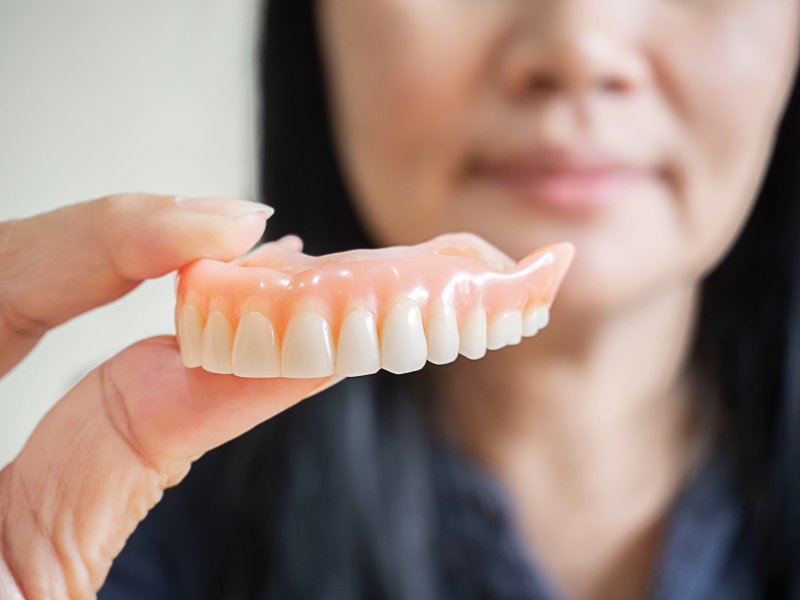
Dentures are one of the most popular and reliable ways to restore missing pearly whites. Thanks to advanced dentistry and technology, your dentist can provide you with durable and natural-looking restorations that will allow you to enjoy your full smile again. However, if you want to ensure that your teeth replacements remain firmly in place, you might consider using adhesives for help. Keep reading to learn a few tips on using denture adhesive properly so you can enjoy your new smile!
4 Simple Steps to Using Denture Adhesive
Here are several easy steps for applying adhesive to your dentures:
- Buy a zinc-free adhesive – Zinc is a common over-the-counter remedy that helps fight colds and flu-like symptoms. Ingesting too much of it, however, can be toxic, so you’ll want to avoid using an adhesive containing this ingredient.
- Brush & rinse your dentures – Make sure to clean your restorations to prevent food and debris from collecting underneath them and on your gums. Use running water and denture cleaner before carefully drying them. Getting rid of moisture will allow the adhesive to stick much more firmly this way.
- Apply the adhesive – Whether using a powder or cream adhesive, you should apply the amount as instructed on the label. Spread it evenly over the top and bottom dentures to ensure optimal security.
- Put on your dentures – With your thumb and forefinger, push your upper and lower restorations into your mouth. Should the adhesive ooze out the sides, make sure to carefully remove your dentures and restart the process with less product.
When Is It Necessary to Use Adhesive?
Dentures are typically designed to fit your exact bite and can last several years. However, when your jawbone structure begins to change due to a lack of stimulation in the tissue, your restorations can start to become loose. If this happens, be sure to consult your dentist for regular adjustments. But if your dentures continue making minor shifts when eating or talking, using adhesive can help significantly.
How to Properly Remove Denture Adhesive
To loosen the solution and easily remove your restorations, try rinsing with water or mouthwash beforehand. Begin gently rocking it back and forth, which will gradually and safely detach it from your gums. Perform the same steps for the upper dentures, which may take more time to complete as they may stick to more surface area. Once you’ve safely removed your restorations, use warm water, a soft-bristled toothbrush, and toothpaste to remove the leftover adhesive. Finally, make sure to clean your tongue, gums, and mouth.
Now that you know how to use denture adhesive, you’ll be able to fully enjoy eating, talking, and smiling with ease in the long run. Speak with your dentist if you have any further questions, and they’ll be happy to help!
About the Author
Dr. Natalya Ramsay earned her dental degree from the Oregon Health and Science University School of Dentistry. She also regularly pursues continuing education to expand her skills and expertise. She offers a wide selection of advanced and comprehensive treatments, including dentures. If you’d like to know more about using denture adhesive, visit her website or call 503-472-1402.
